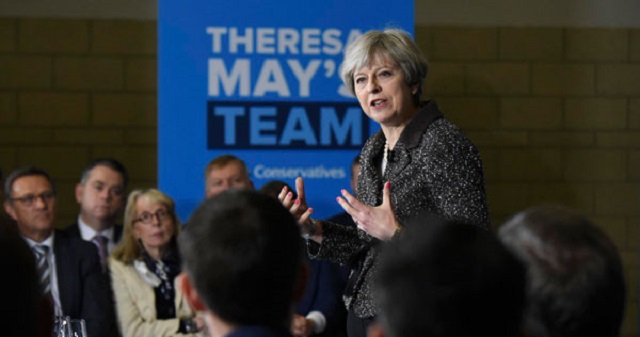
London, United Kingdom | AFP | Members of British Prime Minister Theresa May’s Conservative party have triggered a vote of confidence in her leadership, which will take place on Wednesday evening.
If she loses, her successor would take over in Downing Street. If she wins, she will be immune from further challenge for a year.
Here is how the process works:
– 48 letters –
A vote of confidence can only take place when requested by 15 percent of the Conservative parliamentary party — currently 48 MPs.
They must submit letters to the MP who chairs the 1922 Committee of Conservative backbenchers, that is lawmakers who hold no ministerial office.
Current chairman Graham Brady said the threshold was reached on Tuesday, and in accordance with the rules, informed May after she returned from a mini-tour of EU leaders.
He made the news public on Wednesday morning, timing it before stock markets opened, and set the ballot for the evening.
The rules state the process must be done swiftly, and Brady said May herself was “keen to move forward as quickly as we could and resolve matters”.
– Confidence vote –
Conservative MPs will decide May’s fate by secret ballot, scheduled for between 6:00pm (1800 GMT) and 8:00pm in a parliamentary committee room.
The votes will be immediately counted, with an announcement expected at around 9:00pm.
If May wins — half the votes cast plus one — she cannot be challenged again for a year.
There are 315 Conservative MPs, but two of them are currently suspended and unless this changes before this evening, will not be able to vote.
If she loses, a leadership contest follows in which she cannot stand.
Some commentators believe however that if May’s victory is only by a small margin, her authority may be fatally undermined.
– Leadership contest –
Candidates must be Conservative MPs and have the support of at least two colleagues.
Assuming there are several, Conservative MPs then vote in a series of secret ballots, eliminating the least popular candidate until two remain.
Brady said that if May loses, his committee would likely meet on Thursday to discuss a timetable, and agree it with the Conservative party.
The first ballot could take place as early as Tuesday, with others following on successive days.
“Our goal would be to conclude the parliamentary stages if possible before the Christmas recess” at the end of next week, he told reporters.
The final pair would then be put to a vote of all Conservative party members, with debates between candidates held across Britain over several weeks.
The process can go more quickly — May won the leadership in July 2016 without a vote by party members after her rival, Andrea Leadsom, pulled out.
May warned that any leadership race would take so long that her successor would have to delay Brexit, which is currently scheduled for March 29.
– Why now? –
Hardline eurosceptic MPs have long been critical of May’s Brexit strategy and claimed they had the numbers to trigger a confidence vote.
But they held off, believing she would win.
They said the moment had come last month, after she struck a withdrawal deal with the European Union, but they failed to secure the crucial 48 letters.
The situation changed after May pulled a parliamentary vote on the deal on Monday after signficant numbers of Conservative MPs warned they would side with the opposition to defeat it.
A new Conservative party leader, who automatically becomes premier, would still face the difficult circumstances she has faced in the Brexit process.
The Conservatives do not have a majority in the House of Commons, nor is there a majority of MPs from any political party for one vision of Brexit.
The parliamentary arithmetic will not change without a new election.
 The Independent Uganda: You get the Truth we Pay the Price
The Independent Uganda: You get the Truth we Pay the Price


